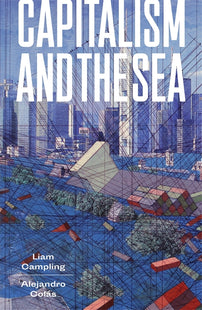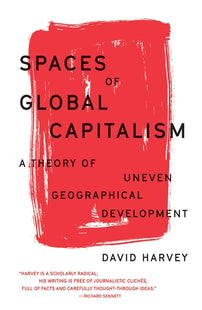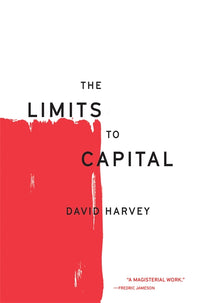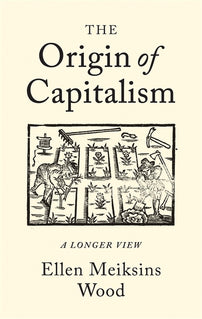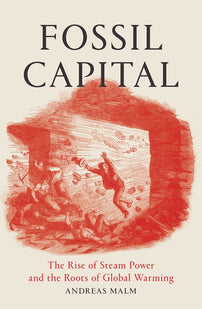Amphibious Capital
Liam Campling and Alejandro Colás analyze the relationship between the land and sea in capitalist production, reproduction, and circulation.

An excerpt from Capitalism and the Sea: The Maritime Factor in the Making of the Modern World by Liam Campling and Alejandro Colás.
The distinction between land and sea plays a fundamental but contradictory role in the origins of capitalism. Some world historians see maritime trade and the accompanying accumulation of wealth in coastal cities as the determining factor in the emergence of this revolutionary mode of production during the ‘long’ sixteenth century (1450-1650). This is the historical era that witnessed not just the circumnavigation of the globe, but also the consolidation of a world market with financial and commercial institutions which – in their use of words like ‘flotation’, ‘liquidity’, ‘flows’ and ‘ventures’ – invoke all the movement and risk of the sea. Marx’s own famous statements on the primitive or previous accumulation of capital underline the place of overseas conquest, the Atlantic slave trade and commercial wars among Europe’s naval powers in the ‘rosy dawn of the era of capitalist production’.
Yet in that very same Part VIII of Capital, Marx also identifies the separation of direct producers from their means of social subsistence, and the associated commodification of labour as the fundamental process that ‘clears the way for the capitalist system’. There, Marx asserts, ‘The expropriation of the agricultural producer of the peasant from the soil is the basis of the whole process’. Commercial farmers, Industrialists and their allies thus replace merchants as the chief protagonists in capitalist development by undermining the power of feudal landlords and medieval guilds, and delivering modern landed property, market societies and the accompanying ‘free exploitation of man by man’. Primitive accumulation appears to be less the outcome of an expanding maritime frontier as it is of agrarian class antagonism, and so the location of capitalism’s birthplace migrates from port to country town; from coast to hinterland.
This tension between the role of accumulation, appropriation and exploitation on the one hand and trade, exchange and conveyance on the other in Marx’s own understanding of capitalism’s genesis plays itself out in one of the most fundamental relationships within this social system: that between production and circulation. Whereas the former is conventionally identified with the realm of value-creation in the exploitation of labour, the latter is seen as a domain of value-realisation in the form of profit upon sale of a commodity. Moreover, the sphere of circulation is characterised by the constant shape-shifting of capital in its diverse commodity, money and productive forms. Maritime trade has historically been linked to an assortment of credit, insurance and commercial institutions that propel commodity and money capital in particular across the globe. But it would be a mistake to make this an absolute and mechanical association – clearly the different circuits of capital operate on both land and sea and, more importantly, the complete capitalist circuit demands the smoothest possible coordination between production and circulation. Capital, in this sense, is amphibious.
This chapter aims to take seriously the complex integration between these moments in the circuit of capital and explore the different ways in which capitalism has from the beginning been conditioned by the peculiar natural-geographical properties of the sea. Although we will be referring to this influence as the ‘maritime factor’ in capitalist development, we seek to avoid presenting the sea as force external to social relations on land. In line with the rest of this book, our focus is on those terraqueous spaces where land meets sea: ports, docks, ships, company houses and trading posts. Our intention therefore is to consider how the fundamentally temporal dynamics of a mode of production rooted on land have interacted through the elementary geophysical properties of the oceans, and vice versa. Rather than building an artificial (and unsustainable) opposition between firm land and fluid sea; between capitalism as a social formation and the ocean as purely natural agent, the chapter seeks instead to constantly probe the changing articulation between maritime circulation, mobility and exchange, and terrestrial accumulation, authority and production. In particular, we make a historical case for underscoring the maritime factor in the emergence of capitalism: while commercial exchange, seaborne trade and maritime labour regimes might not be necessary for capitalism to exist in theory, we argue that they were integral to the historical-geographical juncture of Western Europe at the end of ‘the long sixteenth century’.
Recognising the variation in conceptions and uses of the sea in relation to the dominant form of social reproduction on land opens up the possibility of historicising the dynamic connections between maritime flows and terrestrial authority. Certainly, in the post-Columbian era ‘all the seas of the world became one’ (to paraphrase J.H. Parry) in the sense that mariners were fully conscious of the maritime interconnections between oceans. It is also the case that the earth’s biosphere is teleconnected through complex and distinct inter-decadal relationships between water temperatures in the eastern tropical Pacific (el Niño/la Niña events), Eurasian snow-cover, South Asian monsoons, and subtropical and polar air masses. But the world’s oceans are also sharply differentiated by salinity, acidity, depth, temperature, precipitation and cloud-cover among other local or regional bio-geographical factors, and this naturally affects human interaction with the sea. Regularly overcast skies and low circumpolar latitudes complicated night-time sailing by the star for Northsmen, while the pronounced salinity of the Red Sea, coupled with its ‘maze of shallows’ makes the Straits of Bab el Mandeb ‘easier to enter, in terms of tidal current, than to leave.’
These exceptional geophysical properties of the sea can also affect socio-economic and political relations on land and are in turn changed by the latter. For instance, several decades of far-flung Chinese expeditions across the high seas under the Muslim Admiral Zheng He famously came to an abrupt end in 1433, as the Ming dynasty turned the empire’s attention toward China’s northwest frontier, thereby effectively sealing the mainland from overseas trade and travel, both outgoing and incoming. For its part, the Red Sea’s characteristic wind and current patterns contributed toward what historians of the area have called the ‘Jidda gap’ where the Hijazi port marked an ‘invisible yet palpable late seventeenth- and eighteenth century split’ between ‘the northern sector of the Red Sea … controlled by Ottoman administrators and dominated by Cairene merchants while the southern sector opened up to Yemeni governance and Gujarati commercial preeminence’. Like other emblematic maritime straits – Dardanelles, Gibraltar, Hormuz or Malacca – the Bab el Mandeb continues, as we’ll see in Chapter Three, to act as a strategic chokepoint in a regional commercial and geopolitical system fashioned by a changing combination of socio-political and geophysical forces. As Laleh Khalili’s richly evocative account of shipping and Arabian capitalism shows, postwar oil extraction from the region’s subsoil required its subsequent seaborne transportation. The reconfiguration was not just between hinterland and littoral, but also land and sea in the very material sense that coastal sands dredged through complex processes of land-reclamation literally found their way port-side in the shape of the cement used to construct roads, quays, buildings and other infrastructure. Under specific historical-geographical circumstances, then, the sea and its coastlines effectively become a productive force, simultaneously facilitating generation of wealth through maritime traffic and exploitation, but also conditioning the development of relations of production on land.
In the rest of this chapter, a picture will hopefully emerge of capitalism as a mode of production deeply entangled in a web of maritime trade, risk and enterprise that has at key junctures of its evolution – particularly during the age of commercial capitalism, the Pax Britannica of ‘free trade’ imperialism, and the more recent neoliberal era – shaped the nature and dynamics of the system. We will be looking in the first section of the chapter at the historical sociology of the maritime factor in the birth of capitalism: the interaction through time between various commercial centres of the Mediterranean, Atlantic and Indian Oceans in this process. From here, we proceed to consider the theoretical implications of this history for our understanding of distinct merchant, industrial and neoliberal forms of capitalism. This will require some discussion of contrasting definitions and interpretations of capitalism as a social system, in turn raising important questions about the periodisation of this mode of social reproduction, and its wider connections to environmental histories of the sea.
[book-strip index="1" style="display"]
